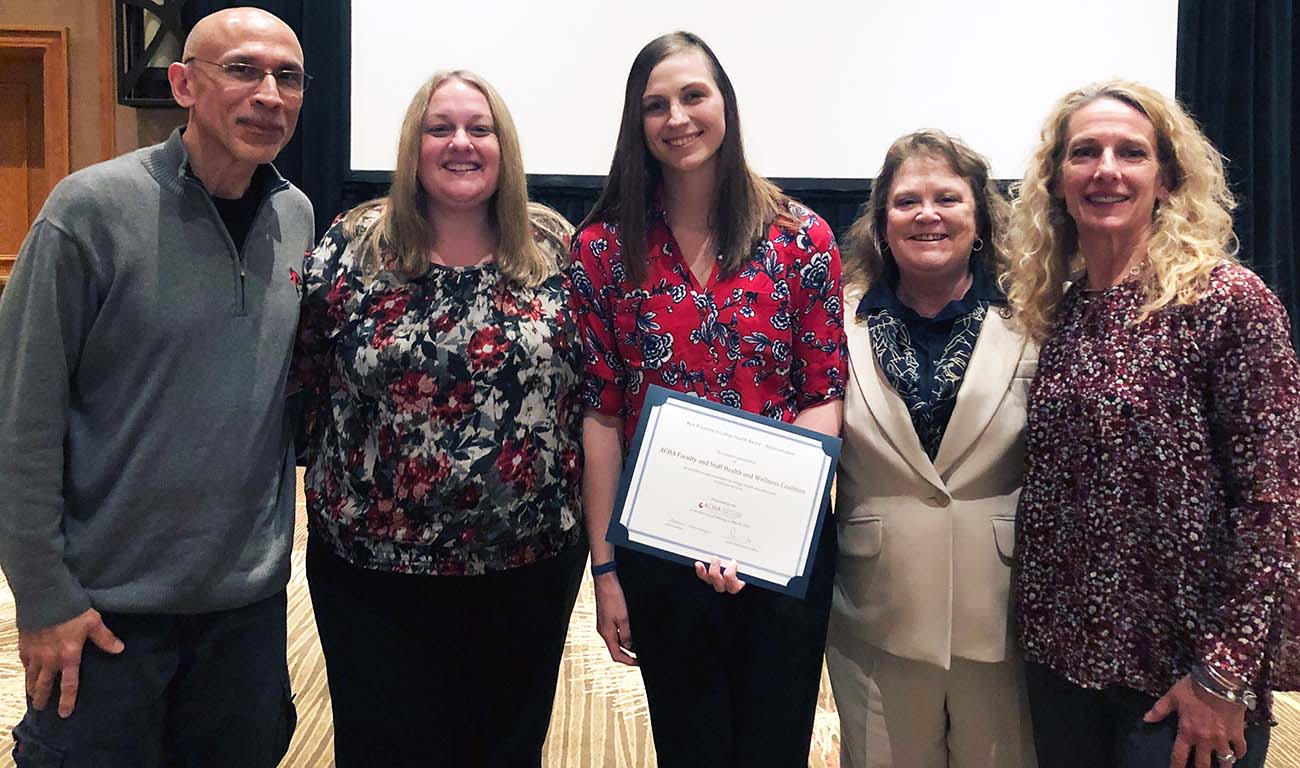
BroncoFit is not just about students’ wellness, it’s about faculty and staff too. Holly Levin, assistant director of Wellness with BroncoFit who received the Best Practices in College Health Award from the American College Health Association, explains the importance of faculty and staff health and wellness after working to develop a national faculty and staff survey for higher education institutions.
“It’s easy for large universities to get caught up in the wellness of their students,” said Holy Levin. “However, it’s important to focus beyond just students and be able to recognize and improve the health and wellness of faculty and staff.”
The American College Health Association has served as the voice for student, faculty and staff health and wellness since 1920. Their efforts are executed through advocacy, research, and education, working to improve health and wellness issues that universities can face. The Best Practices in College Health Award was established to recognize exemplary, innovative, and inspirational practices in college health. Awards are presented to coalitions that demonstrate programs or services of excellence that are evaluated on innovation and uniqueness.
Levin, who was one of six members on the leadership team of the Coalition on Faculty and Staff Health and Wellness that created the faculty and staff survey, received the award alongside her team at the American College Health Association annual conference in Denver, Colorado in May, 2019. Levin, who also serves as a 2019 chair for the Coalition on Faculty and Staff Health and Wellness, joined the on-going project to develop a national survey in 2014. Since then, the coalition has made tireless efforts to research, test, develop, and ultimately create a survey to be purchased by universities across America.
Today, universities can purchase the National Faculty and Staff Health and Wellness Assessment to distribute to their faculty and staff. Adopting the survey allows for higher educational institutions to further understand and assess faculty and staff health and wellness needs. With results, universities are able to make necessary changes or adjustments based on the feedback received and work to improve overall faculty and staff satisfaction in their work environment.
While attending the American College Health Association annual conference, Levin and other members of the coalition also presented on “Current Trends and Gaps in Faculty and Staff Wellness Programs and Initiatives in Higher Education.” Their presentation complimented their award as it focused on the history, importance, and current barriers of faculty and staff health and wellness in higher education.
Additionally, since its creation, Boise State University was one of the first institutions to participate in the survey that launched in January, 2017 and has since been the only school in Idaho to participate. Boise State plans to continue participation in the survey for their faculty and staff every two years.